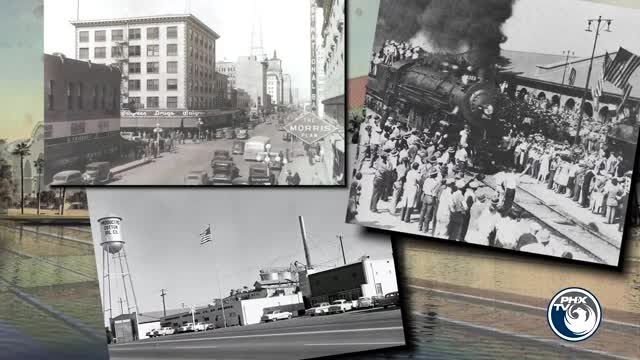Phoenix's post-war boom reshapes economy with manufacturing and tourism surge
November 20, 2024 | Phoenix, Maricopa County, Arizona
This article was created by AI summarizing key points discussed. AI makes mistakes, so for full details and context, please refer to the video of the full meeting. Please report any errors so we can fix them. Report an error »

The Phoenix City Council held a formal meeting on November 20, 2024, focusing on the city's historical development and its ongoing growth. The meeting highlighted key factors that contributed to Phoenix's transformation into a major urban center, particularly during the mid-20th century.
The discussion began with an overview of the post-World War II building boom, driven by an influx of military personnel and technology professionals. This demographic shift led to significant economic changes, with manufacturing and construction becoming vital sectors. By 1963, the electronics and manufacturing industries generated $435 million annually, surpassing agriculture as the primary source of revenue for the city.
Council members noted the importance of affordable air conditioning, which made living in the desert climate more appealing. This technological advancement, coupled with the rapid population growth, necessitated the construction of new housing developments. Notable developers from this era included Del Webb, who created Sun City, and John F. Long, known for developing Maryvale, Arizona's first planned community.
The meeting also addressed the rise of tourism in Phoenix during the 1950s, with the opening of the Black Canyon Freeway in 1950 facilitating travel. By the end of the decade, Arizona welcomed three million tourists, contributing $125 million in tourism revenue. The expansion of Sky Harbor Airport, including the opening of Terminal 1 in 1952 and Terminal 2 in 1962, was highlighted as a critical development in accommodating increasing air travel.
As the meeting progressed, council members discussed the evolution of Phoenix's economy, emphasizing the shift from extractive industries to a more diversified economy that includes aerospace and technology. This transition was supported by infrastructure developments, such as the National Highway Defense Act, which led to the construction of interstate highways.
The council concluded with reflections on the city's diverse community and its potential for future growth. The light rail system, initiated in 2008, was noted as a significant development aimed at enhancing connectivity within the city and supporting local businesses.
Overall, the meeting underscored Phoenix's historical significance and its ongoing evolution as a vibrant urban center, driven by a combination of economic diversification, infrastructure development, and a commitment to preserving its rich history.
The discussion began with an overview of the post-World War II building boom, driven by an influx of military personnel and technology professionals. This demographic shift led to significant economic changes, with manufacturing and construction becoming vital sectors. By 1963, the electronics and manufacturing industries generated $435 million annually, surpassing agriculture as the primary source of revenue for the city.
Council members noted the importance of affordable air conditioning, which made living in the desert climate more appealing. This technological advancement, coupled with the rapid population growth, necessitated the construction of new housing developments. Notable developers from this era included Del Webb, who created Sun City, and John F. Long, known for developing Maryvale, Arizona's first planned community.
The meeting also addressed the rise of tourism in Phoenix during the 1950s, with the opening of the Black Canyon Freeway in 1950 facilitating travel. By the end of the decade, Arizona welcomed three million tourists, contributing $125 million in tourism revenue. The expansion of Sky Harbor Airport, including the opening of Terminal 1 in 1952 and Terminal 2 in 1962, was highlighted as a critical development in accommodating increasing air travel.
As the meeting progressed, council members discussed the evolution of Phoenix's economy, emphasizing the shift from extractive industries to a more diversified economy that includes aerospace and technology. This transition was supported by infrastructure developments, such as the National Highway Defense Act, which led to the construction of interstate highways.
The council concluded with reflections on the city's diverse community and its potential for future growth. The light rail system, initiated in 2008, was noted as a significant development aimed at enhancing connectivity within the city and supporting local businesses.
Overall, the meeting underscored Phoenix's historical significance and its ongoing evolution as a vibrant urban center, driven by a combination of economic diversification, infrastructure development, and a commitment to preserving its rich history.
View full meeting
This article is based on a recent meeting—watch the full video and explore the complete transcript for deeper insights into the discussion.
View full meeting
